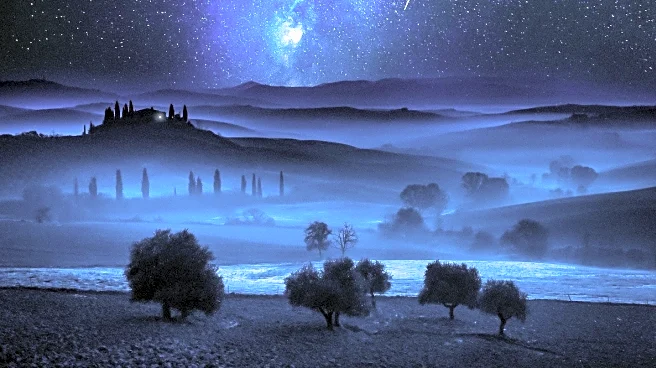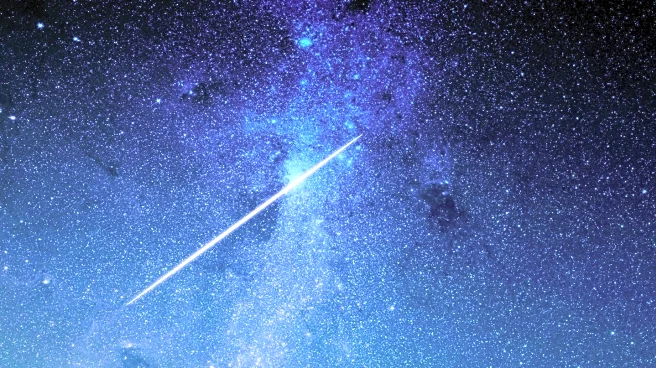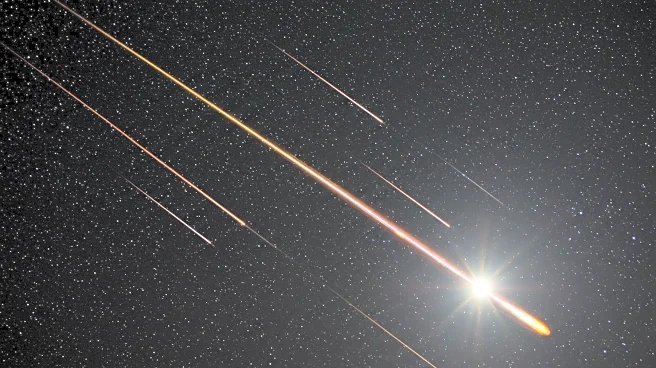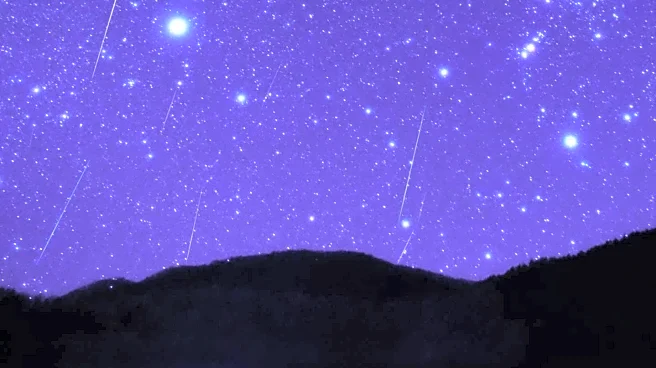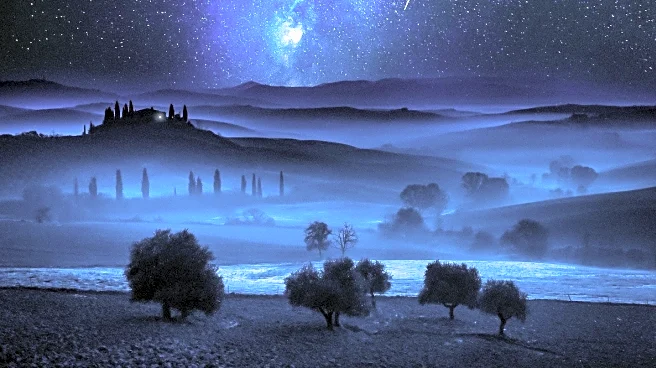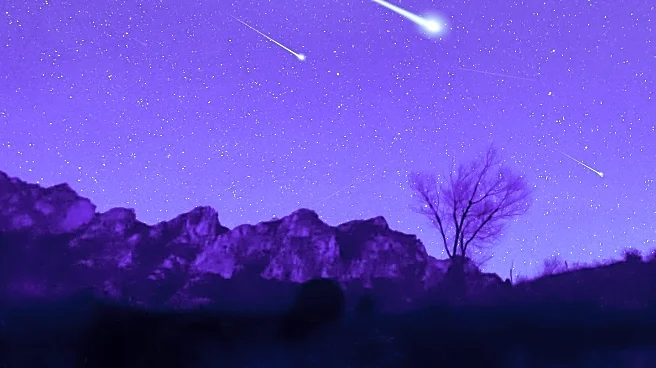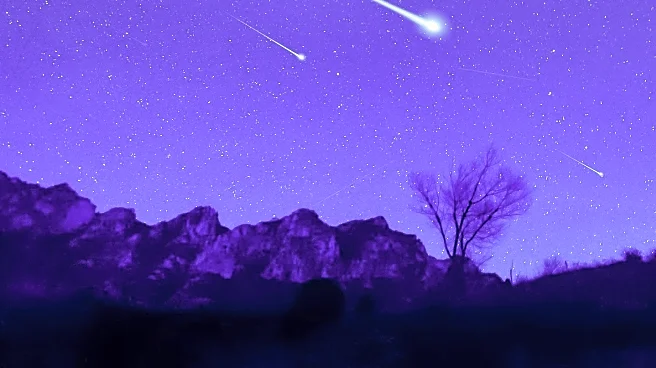Rapid Read • 7 min read
The Perseid meteor shower, a highly anticipated annual celestial event, peaked on Tuesday, August 12, 2025. Known for its bright meteors, the shower typically produces 40 to 50 meteors per hour. However, this year, the visibility was reduced due to the waning gibbous moon, which was 85% illuminated. As a result, sky-gazers were advised to expect only 10 to 20 meteors per hour. The best viewing times were identified as the hour before moonrise on the evening of August 12 and the early morning hours before daybreak on August 13. The event coincided with a conjunction of Venus and Jupiter, adding to the celestial display.
AD
The Perseid meteor shower is a significant event for astronomy enthusiasts and the general public, offering a chance to witness a natural spectacle. Despite the reduced visibility due to the moon's brightness, the event still drew interest due to its timing with the conjunction of Venus and Jupiter. Such celestial events foster public interest in astronomy and provide educational opportunities about the solar system. The shower also highlights the challenges of light pollution and the importance of dark sky preservation for astronomical observations.
Following the Perseid meteor shower, several other meteor showers are expected in 2025, including the Draconids in October and the Geminids in December. These events will continue to engage the public and provide opportunities for observation and study. Additionally, upcoming lunar and solar eclipses will offer further chances for celestial observation and public engagement with astronomy.
AD
More Stories You Might Enjoy
